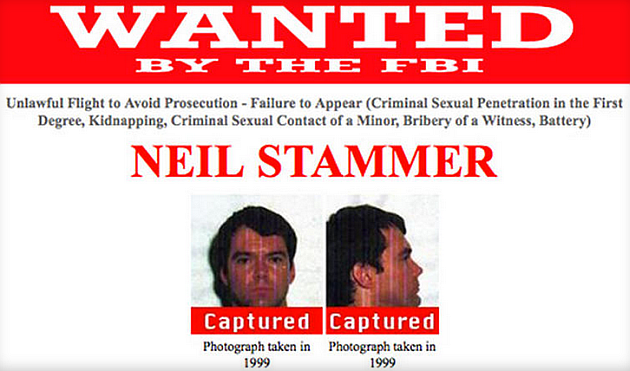Facial Recognition Technology On Cold Case Leads FBI To Fugitive 14 Years' Later
Cold cases are getting new life breathed into them with the use of facial recognition software employed by the FBI. In the most recent case, Neil Stammer who was convicted of child sex abuse and kidnapping charges in New Mexico back in 2000 and then skipped out of town, was just recently located teaching English in Nepal, Central Asia.
Released On Bond, Skipped The Arraignment
Stammer was arrested and then later released on bail bond while facing multiple state charges, but he never appeared at his arraignment. He was said at the time to be able to speak several languages and able to get into and out of tricky situations easily.
FBI Unsuccessful For Years In Locating Stammer
The FBI tried for years to locate him. The situation got so bad that they actually put the case on a shelf as a cold case and stopped looking at the case for a while. Much later, FBI Special Agent Russ Wilson was given the responsibility as fugitive coordinator. This responsibility covered New Mexico where Stammer should have appeared at the arraignment year before.
For Special Agent Wilson, the Stammer case was one that got special attention from the pile of old cold cases and current fugitive cases he was responsible for. Special Agent Wilson put out a new version of the “Wanted” poster for Stammer in the hopes it was spark new interest in the case.
Diplomatic Security Service Check Passport Authenticity
Meanwhile, the Diplomatic Security Service which has the responsibility to seek out fake US passports had just started to use facial recognition software to discover fake passports. As a result, the “Wanted” poster was scanned and checked against US passports. They came up with a match. Stammer was hiding out in Nepal working as an English teacher using a bogus US passport under the alias of Kevin Hodges.
The Diplomatic Security Service got in touch with Special Agent Wilson and he got busy tracking down Stammer / Hodges in Nepal. It didn't take long to check the local schools and find where the teacher had been busy educating local Nepalese kids. Local authorities were notified by the FBI and the fugitive was picked up.
Facial Recognition Software Used Across Many Branches of Law Enforcement
With tech companies like Facebook able to use their DeepFace facial scanning technology to pick faces out of a crowd for name tagging, it should come as no surprise that facial recognition software is becoming both far more widespread and far more powerful.
Reception for facial recognition has been up and down in law enforcement circles with critics citing false positives. Privacy organizations are concerned about data collection which includes the FBI said to be in the process of collecting 52 million images by 2015 and the intelligence agencies actively building up their own store of profile images from social media, email and other sources according to whistle-blower, Edward Snowden. Facial recognition is clearly here to stay. Privacy is getting smaller by the minute and some would argue that it's gone already.
Not only the FBI is using facial recognition techniques to track down fugitives. Some 40 law enforcement agencies from the West coast to the East coast are beginning to use mobile facial recognition powered by iPhones and external attachments to take shots and quickly scan criminal databases while officers are on the move.
Clearly facial recognition is here to stay and private citizens need to embrace the reality of it.

